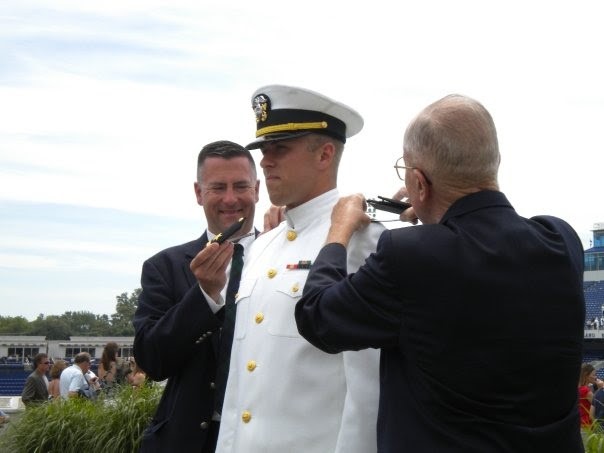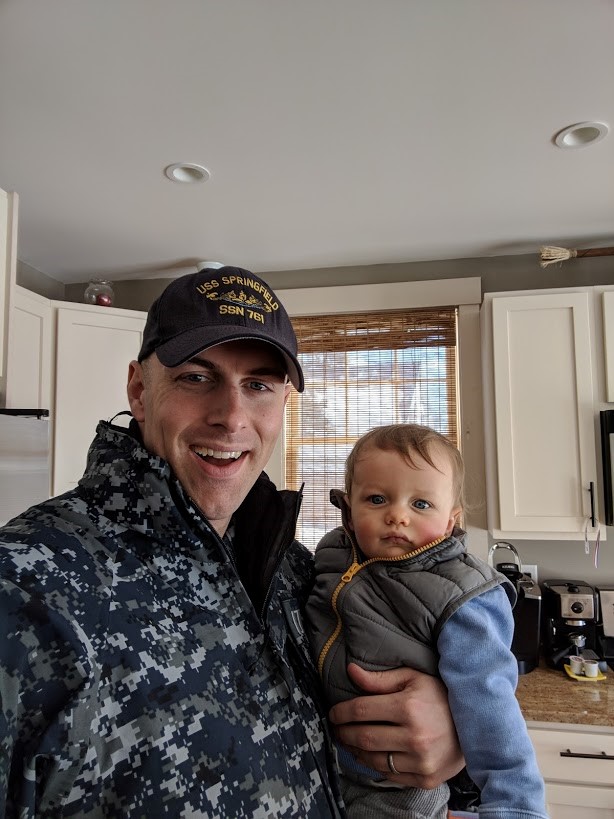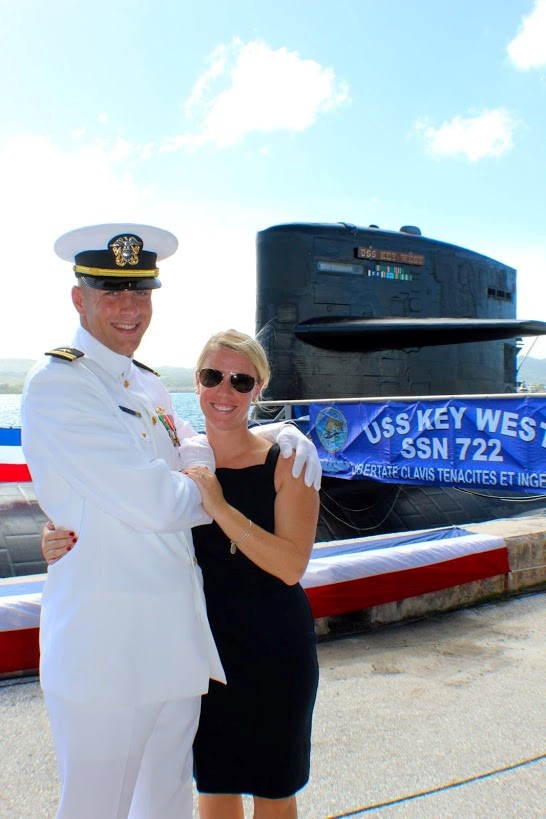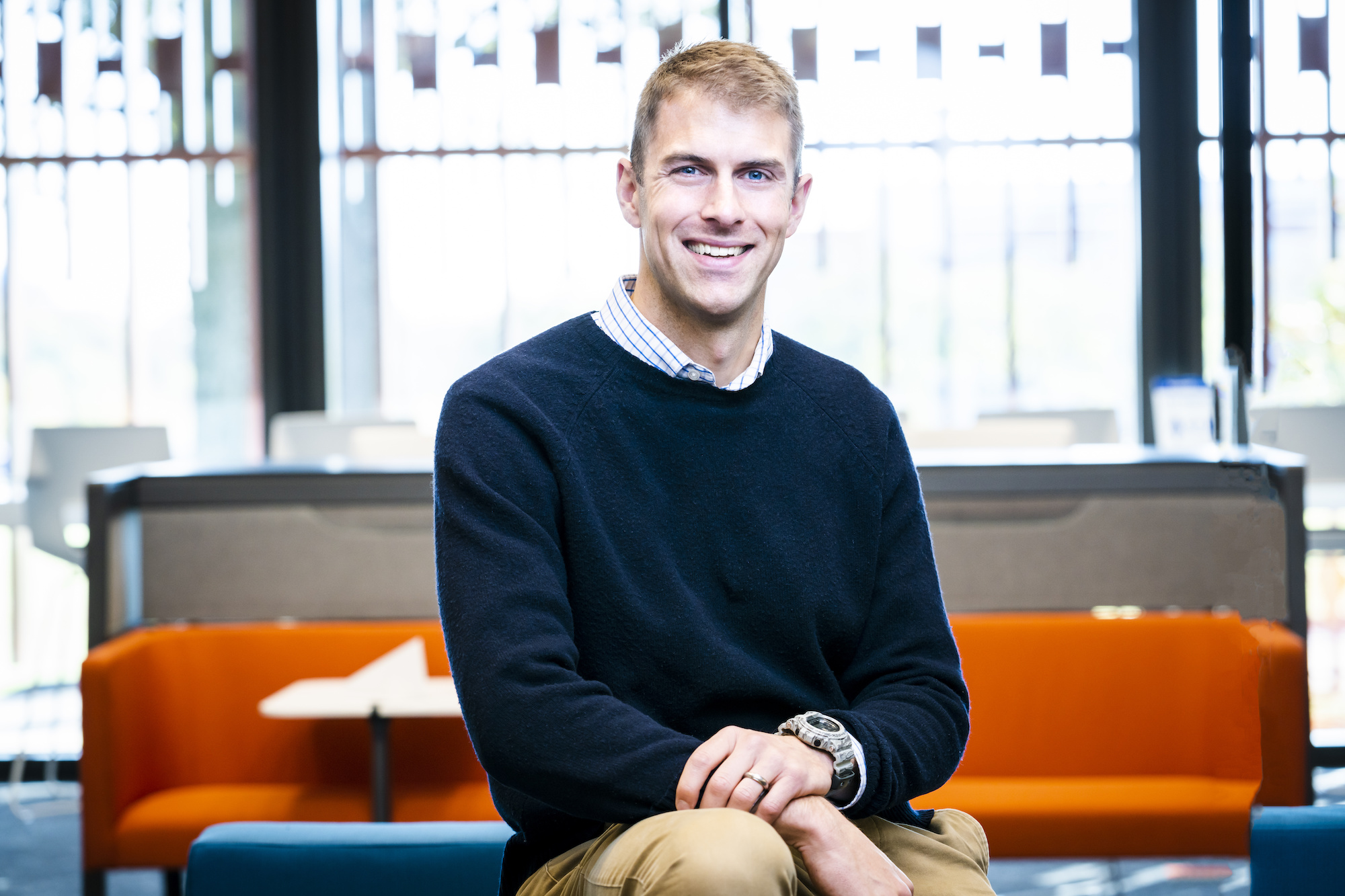News
Veterans Find a Home at Johns Hopkins APL

Credit: Owen Brooks
Owen Brooks had served as a naval officer for almost a decade when he first began thinking about a civilian career.
It was 2017, during his second submarine tour and one month after his son Jacob was born. Brooks shipped out from his base in Portsmouth, New Hampshire, where he was assigned to the USS Springfield. After a short stay back at home, he shipped out to Sasebo, Japan — this time to support a much longer operation on the USS Olympia. Brooks missed his first Father’s Day and the milestones that occur in those first few months of a baby’s life.
For Brooks, who joined the Johns Hopkins Applied Physics Laboratory (APL) in Laurel, Maryland, last year as a maritime surveillance systems test and evaluation engineer, leaving the Navy was a difficult decision.
“It was a productive trip [to Japan], but because of the nature of that trip, I couldn’t talk to my family for a month and a half,” said Brooks, who works in the Laboratory’s Force Projection Sector. “That experience, while rewarding, began to change my mind. I knew that the [operational tempo] would only increase the longer I decided to stay. It was a gradual, methodical decision that I made with my wife throughout 2017 and beyond. I really enjoyed the Navy, and I was doing well, but I knew I needed to be there for my family.”

Credit: Owen Brooks
APL is a research division of Johns Hopkins University that is focused on providing science and technology solutions to the United States in a wide array of domains, from defense to health care to space. The Lab works hard to recruit and retain veterans like Brooks and currently employs more than 800 former service members. Brian Muñoz, a supervisor in APL’s Talent Services Department who recruited Brooks, said veterans often cite family as the reason they decide to transition out of the military, and they are attracted to the Lab’s balanced approach to work and life.
Service members are also drawn to the Lab’s mission, which is often directly relevant to the skills they learned while serving the nation.
“Because of the nature of the work we do, that military experience is very applicable to the Laboratory’s needs, both from an operations and a technical standpoint,” Muñoz said. “The training and background — their dedication to the warfighter and to their job — are all part of what makes veterans highly valuable to the Lab.”
APL uses staff referrals, military-focused job boards, career fairs and conferences in its search for outstanding military candidates.
“I connected with Owen through another job seeker at the Navy Nuclear Power Officer Career Conference,” Muñoz recalled. “Owen had applied for a job at APL that wasn’t exactly the right fit, but I looked at his experience and thought he’d be a great fit for a different position. I reached back to the team regarding his background, and we ended up hiring him. He started about six months later, after his separation from the military.”
That flexibility in hiring is an advantage the Lab has over other organizations, which are often unable to hold a job open for more than a few months. Service members enter the job market up to a year ahead of their separation date, and APL can often accommodate that timeline.
Mia Jackson, the Lab’s Total Rewards group supervisor, said the fact that the Lab values family and work-life balance is just one aspect of the culture that attracts applicants from the military.
“We are critical thinkers and problem solvers,” Jackson said. “This is a mindset that is familiar to people coming out of military service. Our benefits are also attractive to many in the military, who are coming from strong government plans. This includes retirement, scholarship programs for dependents and the part-time study program.”

Credit: Owen Brooks
That many veterans are attracted to APL and go on to make a successful transition doesn’t mean the process is easy. It helps to have colleagues who share their military background and can assist in navigating the differences and appreciating the similarities in the two cultures.
“I have a lot of role models here, ranging in age and skills,” Brooks said. “One is my program manager, Brendan Gotowka. We overlapped in the Navy. He helped me learn the landscape faster than I ever would have on my own.”
Former service members say one of the Lab’s most powerful retention tools is arguably the most difficult to operationalize — showing appreciation. Stephen Phillips, president of the APL Veterans Club, says there is a consistent, positive feeling throughout the Lab that conveys to veterans that they are valued. Along those lines, this year APL added Veterans Day to its list of officially recognized holidays.
“Probably the most significant and visible way the Lab recognizes its former service members is the lobby banners displayed during the month of November,” Phillips said. “The banners list the names of all of the people who have identified themselves as veterans at APL. I look at the list, and often I see someone I didn’t realize is a veteran. And I go and have a conversation with that person. Others have seen my name on the banner and have asked about my service. Those moments create relationships that improve our work environment and build collaboration.”
Phillips believes the convivial environment at APL is fundamental to retention. “We are made to feel welcome, and the Lab is supportive of us. That leads to people to stay.”
